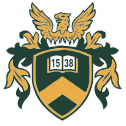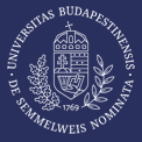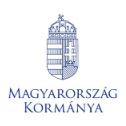Detailed introduction of the Hungarian University of Fine Arts:
Introduction and Overview
Location: Located in Budapest, the capital of Hungary, the main campus is on Andrassy Avenue, and the other campus is in Mulberry Garden, adjacent to the Danube River.
Student Composition: Students come from Hungary and all over the world. The diverse cultural background has created a rich and diverse artistic atmosphere for the campus and promoted the exchange and integration of different artistic concepts and creative styles.
History and Establishment Time
The Hungarian Academy of Fine Arts was established in 1871. It was formerly the Hungarian Royal Painting School. The main building was rebuilt in 1997 and officially changed its name to the Hungarian Academy of Fine Arts in 2001. .
School Strength
Teaching Staff: There are many professors and experts with outstanding achievements in the field of fine arts, such as painters Károly Ferenc and Janos Vasari. They not only have profound attainments in traditional art fields such as painting and sculpture, but also have in-depth research and rich teaching experience in modern art and art theory, and can provide students with professional guidance and inspiration.
Subject Majors: Provide courses at all levels from undergraduate to doctoral level, covering painting, sculpture, art design, multimedia synthesis, stage and costume design, work restoration, art management, art theory, visual education and other majors. The subject setting is comprehensive and keeps up with the trend of art development, meeting students' learning and exploration needs in different art fields.
Teaching Facilities: The school's teaching facilities are advanced and complete, with professional studios, sculpture studios, multimedia laboratories, etc., providing students with a good practical creation environment. In addition, the school's library has a rich collection of art books, journals and picture albums, which provide strong support for students' theoretical learning and research, while the exhibition space on campus, such as the Baccis Hall, provides an important platform for students to display their works and communicate art.
Nature of the institution
Public university.
Educational philosophy
Committed to inheriting the fine traditions of Hungarian art history, while actively seeking innovation and development, and cultivating artists who can lead the direction of contemporary art. Focusing on the combination of theory and practice, it emphasizes that students should not only master solid artistic skills, but also have a deep foundation in art theory and a keen insight into contemporary art trends, in order to cultivate artistic talents with innovative spirit and social responsibility.
Key disciplines and departments
Key disciplines: Painting, sculpture, art theory and other disciplines are the traditional advantageous disciplines of the college, and have a high reputation and influence in the Hungarian and even European art circles. In recent years, disciplines such as multimedia art, stage and costume design have also developed rapidly and become emerging key disciplines of the college, providing students with broader development space and employment prospects.
Department settings: There are painting departments, sculpture departments, art design departments, art theory departments, multimedia departments, stage and costume design departments, work restoration departments, etc. Each department has its own unique teaching goals and curriculum system, providing students with systematic and professional art education.
Ranking
Ranked 19th in the national university rankings of the Global University Network (4ICU).
Expenses
Tuition: The tuition fee for undergraduate courses is about US$5,000 per year, and the tuition fee for master's courses is also about US$5,000 per year.
Living expenses: About US$393 to US$760 per month.
Campus
Campus facilities: The main building of the main campus was built in 1876, with a unique architectural style and a strong historical and cultural atmosphere. In addition to teaching facilities, the campus also has student dormitories, canteens, cafes and other living facilities, providing students with convenient learning and living conditions.
Campus environment: The campus is surrounded by a strong artistic atmosphere, with many galleries, museums and art studios, providing students with a wealth of extracurricular art activities and practical opportunities, which is conducive to broadening students' artistic horizons and inspiring creative inspiration.
-

Hungarian University of Agriculture and Life Sciences
-

University of Pécs
-

Budapest University of Technology and Economics
-

University of Debrecen
-

Semmelweis University
-

University of Pannonia
-

University of Szeged
-

Eötvös Loránd University
-

University of Sopron
-

University of Miskolc
-

Mesoamerican University
-

Istmo University
-

Mariano Galvez University of Guatemala
-

Regional University of Guatemala
-

Galileo University
-

Francisco Marroquín University
-

Rafael Landívar University
-

University of the Valley of Guatemala
-

University of San Carlos of Guatemala
-

Technological Institute of Tlaxcala Plateau
-

Golfo University
-

Technological University of South Sonora
-

Technological University of Huejotzingo
-

Tizimín Institute of Technology
-

Chilpancingo Institute of Technology

